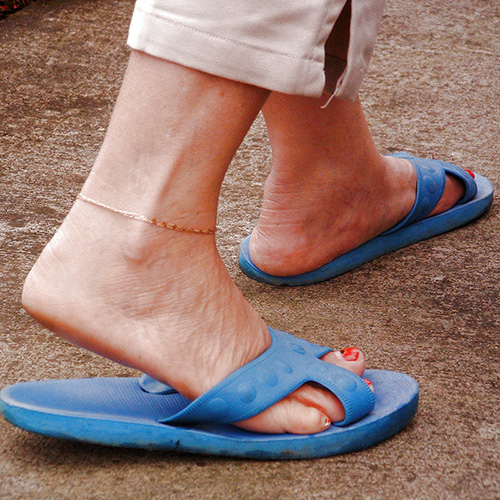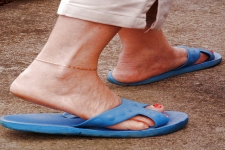If you overstretch your Achilles tendon, it’s possible to either partially or completely rupture it – in this instance, a rupture involves either tearing or separating the tendon fibers, leaving the tendon in a state of injury where it can no longer perform its normal function.

While it’s possible to experience no signs or symptoms of an Achilles tendon rupture, most individuals who’ve endured this type of injury describe feeling a “pop” or “snap” that’s accompanied by potentially excruciating pain in the lower portion of the leg near the heel. Other symptoms of an Achilles tendon rupture include swelling, not being able to bend your foot downwards, an inability to “push off” the affected leg when attempting to ambulate (walk), as well as not being able to rise up onto the ball of your foot.
When the Achilles tendon ruptures, it tends to occur in the portion that’s approximately 2.5” above the spot where it attaches to the heel bone. It’s thought that this particular spot may be predisposed to injury because of the fact that it gets less blood flow, which can also impair its ability to heal. When the tendon ruptures, it’s often caused by a sudden spike in the amount of stress that’s being placed on the area – some common examples would be: an increase in the intensity of sports participation, especially sports that involve running, jumping, and/or sudden starts and stops (think soccer, basketball, and tennis); stepping into a hole; and, falling from a height.
If you think you may have injured your Achilles tendon – and especially if you experience any of the symptoms described above – make sure to seek medical treatment as soon as possible! Treatment for a ruptured Achilles tendon typically depends upon age, activity level, and severity of injury, and there are both surgical and nonsurgical options available.
Nonsurgical treatment involves wearing a cast or walking boot that has wedge inserts which serve to elevate your heel while the tendon heals. While this method does allow for the avoidance of surgery, the likelihood of re-rupture can be higher (when compared to surgical treatment) and recovery can, surprisingly, take longer.
If the rupture is tended to surgically, a foot and ankle surgeon will repair the tendon and, if needed, opt to reinforce it with other tendons. For those with a complete rupture of the tendon, surgery may be necessary regardless.
After treatment – be it surgical or non-surgical – your foot and ankle surgeon will prescribe a rehabilitation program (such as physical therapy) to help strengthen both your leg muscles as well as your Achilles tendon. The majority of individuals are able to return to their former level of activity within four to 6 months following treatment.
When it comes to a ruptured Achilles tendon, being tended to by an experienced foot and ankle surgeon is a must. Fortunately, Prairie Orthopaedic & Plastic Surgery, PC in Lincoln, Nebraska, has Dr. Kara Krejci at your service! Dr. Krejci is not only an amazing foot and ankle surgeon, but she is also board certified in Podiatric Medicine, and specializes in sports medicine and reconstruction as well.
source: aaos.org; mayoclinic.org

